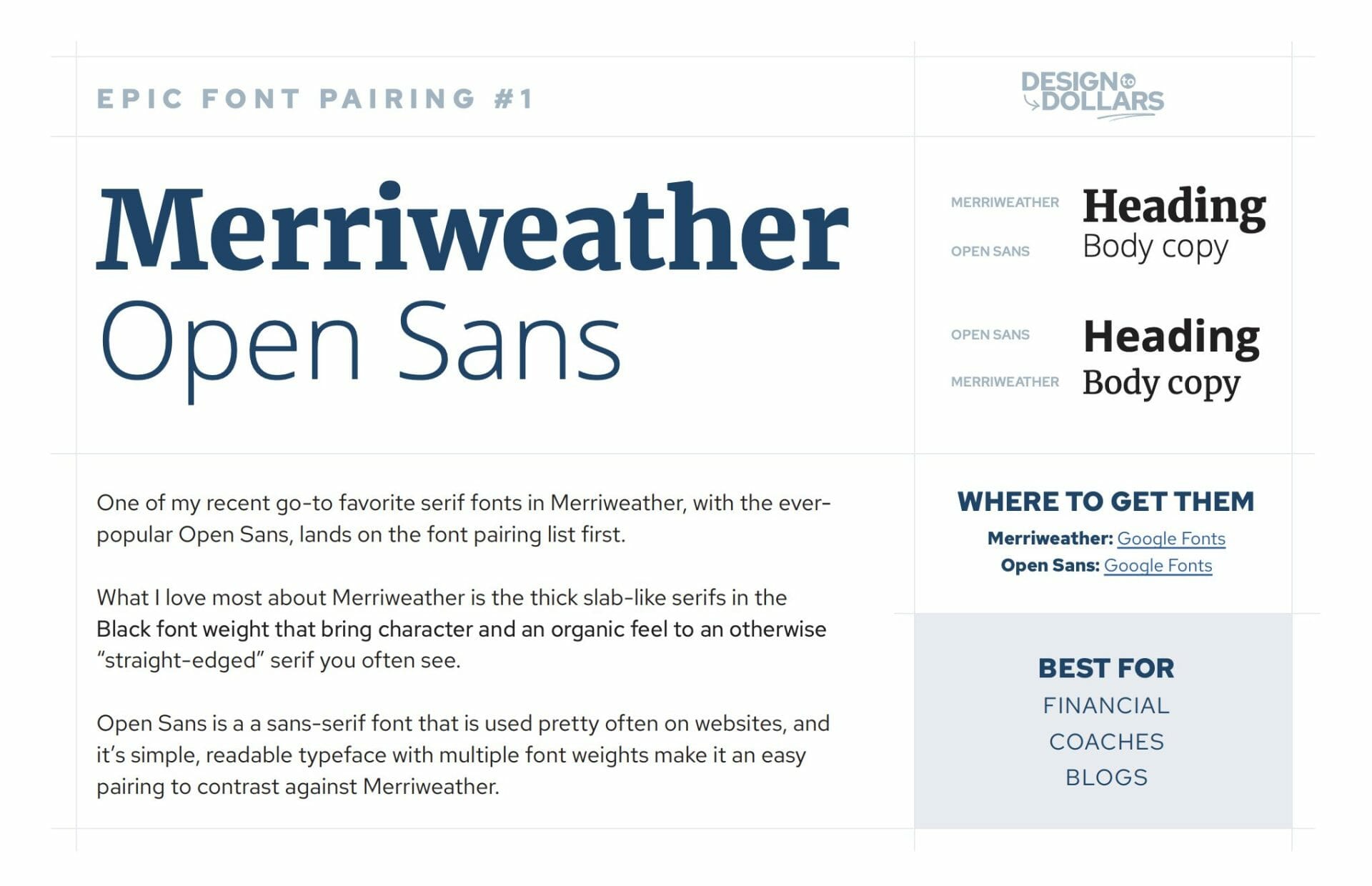If you are a designer, developer, social media manager, marketer, or just attempting to create some graphics on the side, figuring out what file extension to choose can be confusing.
For starters, I’d say the most popular file extensions used are: .png, .jpg (or .jpeg), .pdf, .tiff and .gif.
Some other, more advanced file types can be .eps or .zip.
Here’s a breakdown of each file type and what scenario is best for using each.
5 Epic Font Pairings You Can’t Go Wrong With
Tired of searching for fonts? With my 10+ years of design experience, I’ve put together the best font pairings for you to use, where to find them, and what industry they’re best for.
Get the Free Guide
PDF (Portable Document Format File)
Primarily used in print, the .pdf file extension is excellent for printing documents. So if you’re creating a resumé, a flyer, or even a business card, utilizing the .pdf file type is ideal. If you have Adobe Acrobat, you have a variety of tools at your hands with .pdf, including editing, rearranging pages, signing documents, and more.
JPG (Joint Photographic Experts Group)
One of the most used file types for images, .jpg is a compressed digital image format. This file type can be versatile for both high and low resolution needs, just depending on your usage. So if you’re using an image for print, save it at a high resolution (300dpi), but if you’re saving a .jpg image for web or digital, you can get away with 72dpi.
EPS (Encapsulated PostScript)
This file type is a designers top requested file type for use on print. An .eps file type is a vector format which enables you to scale it at virtually any size you want, without losing quality. A vector design must first be created in order to save it as an .eps — you can’t just take a .jpg and turn it into a .eps. Banners and large signage are the best application for using an .eps file.
PNG (Portable Network Graphics)
A widely popular file type for mostly web and digital applications, the .png file type is excellent for saving images with a transparent background (i.e. you can have a circle image shape, instead of that white box in the background of your circle). You can still use .png files for print, as they are capable of good resolution.
GIF (Graphics Interchange Format)
Known today as those funny images that animate, the .gif file type is used for web and digital applications in most cases. The compression used in .gif file types is different in that it restricts images to 256 colors. So it’s best to use this file type if you have less colors.
TIFF (Tagged Image File Format)
A .tiff file extension can be used for saving images at high resolution, which in turn doesn’t make them friendly for smaller file sizes. If you’re editing an image digitally, .tiff works great, but when exporting that image for web use, you’ll want to use .png, .jpg, or .gif. When it comes to web, the smaller the file size the better.
ZIP
Although not a directly usable file type, the .zip is used for compressing and archiving one or more files. It’s great for sharing a number of large files in an email-friendly way. The receiving end of the .zip file must unzip the file so as to reveal what’s inside.
So, what file type should you choose?
To sum it up:
Print documents – .pdf
Large banners, signage – .eps
Images for social media, websites, digital banners – .png, .gif or .jpg
Sending/archiving images – .zip
We hope this quick guide helps you in saving your next graphics and images. If you have any questions, or need help — feel free to give us a shout.




